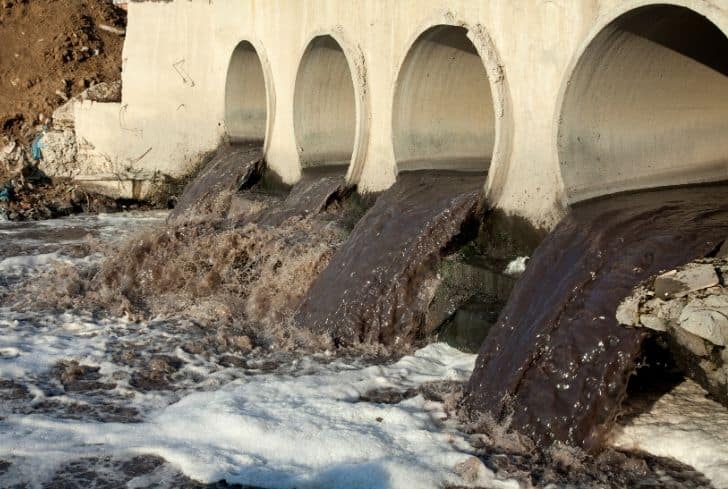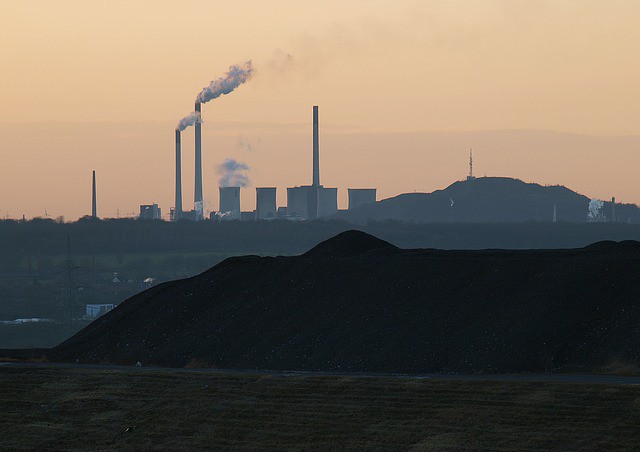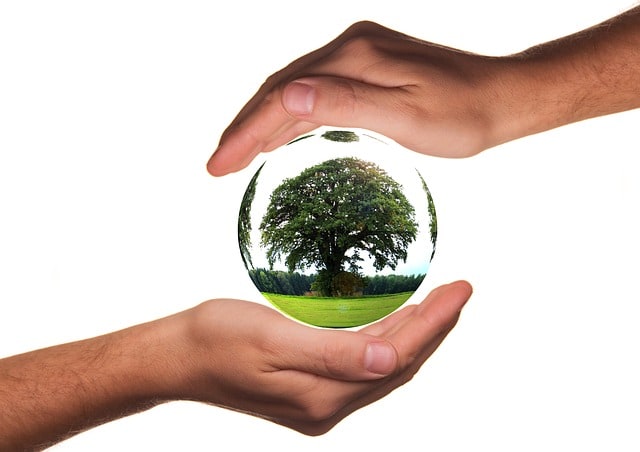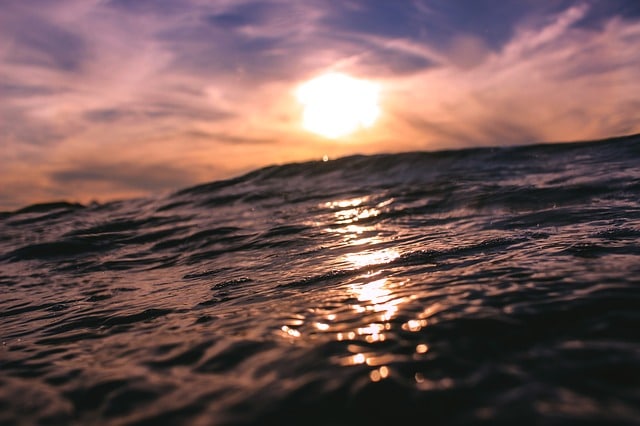Types, Sources, Effects and Solutions of Wastewater on Our Environment
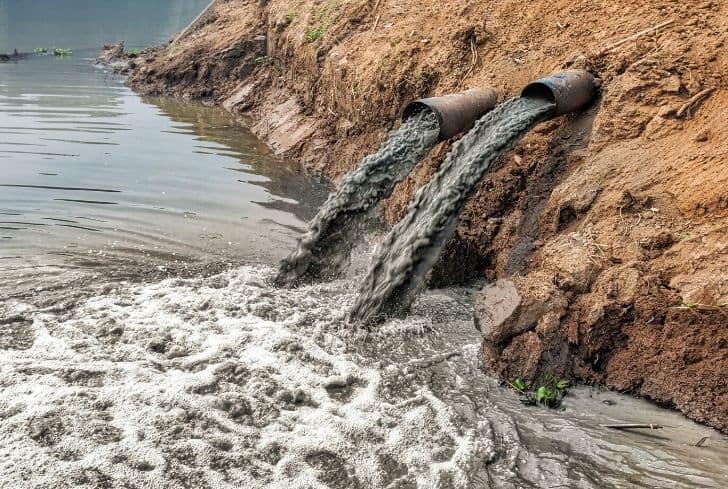
Optimal water quality is vital for maintaining human health and a healthy ecosystem. It plays an equally essential role in socio-economic development. But in the wake of ever-increasing population and degrading natural resources, maintaining a safe water supply is getting highly challenging. Herein comes the pressing issue of wastewater.
When water flows across our earth’s surface, it taps in the characteristics of the different materials, including (but not limited to) minerals, organic matter, and (more often than not) toxic chemicals. This makes the water impure and therefore, unfit for consumption. This impure water is interchangeably known as wastewater.
Over the next few sections of this article, we will take a closer look at wastewater, its sources, types, environmental impact, and solutions.
As previously mentioned, wastewater refers to the impure water that is unfit for human consumption. This could come from residential or domestic sources. The common causes of wastewater are the liquid and sewer impurities that come from homes, hospitals, factory units, and any other institution that require water in their facilities. Other wastewater would also come from industrial, agricultural, and commercial activities, as well as stormwater or surface runoff.
So, in a way, every time you flush the toilet or dump kitchen waste in sinks, the water used will eventually take the shape of wastewater, damaging groundwater systems, oceans, and other small and large water bodies.
It should be noted that sewage is also considered as wastewater. It is a waster that originates from bathroom fixtures, kitchen sinks, toilets, bathing, and similar dirty water that is created in households and public areas.
The Environmental Protection Agency defines wastewater as the waste material which includes sewage waste and industrial liquid waste that is collected in urban and rural areas. Wastewater is then treated at urban wastewater treatment plants as well as sewage that comes from individual houses that could be found in the countryside. In developing countries and in rural places with low population densities, the wastewater is frequently treated by several different on-site sanitation systems which are not conveyed in sewers.
Untreated wastewater could contain biological, chemical, and physical pollutants. chemical or physical pollutants would include heavy metals (chromium, lead, and mercury), organic particles (hairs, food, feces, vomit, and plant material), soluble organic material (urea, drugs, and pharmaceuticals), macro-solids (sanitary napkins, dead animals or plants, condoms, diapers, and toys), emulsions (paints, adhesives, oils, and mayonnaise), and toxins (pesticides, herbicides, and poisons), among others.
Biological pollutants, on the other hand, would include bacteria (Salmonella, Campylobacter, Shigella), viruses (rotavirus, hepatitis, enterovirus), protozoa (Entamoeba sp., Cryptosporidium sp., and Giardia sp.), and helminths (roundworm, hookworm, and whipworm). Wastewater could also contain non-pathogenic organisms such as arthropods, insects, and fishes.
Types of Wastewater
Wastewater can be broadly categorized into two types, namely domestic and industrial wastewater. In this section, we will learn more about them.
Domestic Wastewater
Originating from households, domestic wastewater might include water coming from hospitals, industries, and other commercial facilities. Water collected during a storm might also qualify as domestic wastewater. Its common sources include liquid discharges from our regular sanitary uses like bathing, cooking, washing meat, vegetables, and clothes. Despite being heavily impure, domestic wastewater can be duly treated.
Industrial Wastewater
As evident from the name, this wastewater usually originates from manufacturing or commercial units. This water contains a heavy influx of impurities like oil, silt, toxic chemicals, ink, drugs, pesticides, sand, silt, chemicals, and it may not be treated as conveniently as domestic wastewater.
It is worth noting that in addition to the mentioned categories, wastewater may be further divided into the following subcategories.
Blackwater
Blackwater is a form of domestic wastewater and it usually originates from our toilet units, dishwashing units, and kitchen sinks. This type of wastewater has been contaminated with human waste. Hence, such wastewater comes from flush toilets and even bidets. This water contains every impurity that goes down our toilet, bathroom, and the drains of our sinks.
Common impurities include feces, urine, body wipes, toilet paper, soap, shampoo, detergents, and more. Owing to the heavy presence of dissolved chemicals, this water is deemed highly pathogenic.
Additionally, they could contain anal cleansing water, body cleaning liquids, and shampoos, among others. Furthermore, blackwater coming from food preparation sinks are also filled with cooking oil, food particles, and grease.
This type of wastewater is highly contaminated and very pathogenic. It is filled with a lot of particulate matter and dissolved chemicals. It is also a home to millions of bacteria that should be decomposed fully before being released back into the environment.
Graywater
Also known as sullage, this type of wastewater has not been contaminated with fecal matter. This form of wastewater primarily originates from non-toilet units like showers, washing machines, hand basins, laundry machines, bathtubs, spa sinks, and everything in between. This is the sewer water that doesn’t have any trace of urine or human waste. Albeit toxic, greywater can be duly treated, making it suitable for human use.
Unlike blackwater, greywater contains lesser pathogens. However, it should still be noted that it contains small amounts of possible contaminants which could cause diseases should it be ingested. Because it does not contain any feces or urine, treatment for greywater is different from blackwater. Usually, greywater is suitable for re-use after being treated in an appropriate wastewater treatment facility.
Floods which contain greywater could be brought about by a weather phenomenon, a broken pipe, or an overflowing plumbing fixture. People should be cautious when handling greywater by following precautionary measures including gloves and wearing protective gear because they could still pose some health issues. Untreated greywater could become blackwater
Yellow Water
This refers to the urine that’s collected across dedicated channels. Yellow water isn’t contaminated by the impurities of black or greywater. As with greywater, it may be suitably reused.
Sources of Wastewater
The common sources of wastewater are domestic sewage wastewater and non-domestic wastewater. Here’s a brief lowdown.
Domestic Sewage
The wastewater created from homes, public toilets, hotels, resorts, motels, schools, religious institutions, hospitals, doctors’ clinics, sports centers, and apartments can be classified as domestic sewage wastewater. The mentioned institutions individually and collectively create significantly high levels of wastewater.
Non-Domestic Water
This includes the wastewater created from floods, rainwater runoff, swimming pool water, garage water, and water from cleaning centers. Wastewater generated from salons, commercial kitchens, energy units, and agricultural facilities can also be classified into this category.
So, in a way, the water used in both residential and commercial units will add to the volume of wastewater produced by the property.
Effects of Wastewater
As you’d probably guess at this stage, the impact of wastewater is devastating, to say the least. It adversely impacts the environment and ends up ruining the ecological balance. Its impact on human health is equally alarming. Here’s a shortlist of the worst effects of wastewater.
Contamination of Habitat and Water
The first and the most pronounced impact of wastewater is the fact that it ends up contaminating and (eventually) destroying the natural habitats. Over time, the wildlife residing in these habitats are affected as they are under the exposure of harmful chemicals borne by the water. So, wastewater doesn’t just destroy habitats, but it also ends up killing the animals living there.
Ailments
Wastewater is one of the biggest causes of ailments in both humans and animals. As per the reports of the World Health Organization, every year, at least 3.4 million individuals are afflicted by waterborne ailments. In addition to the ailments carried by the wastewater, the combined impact of human feces, solvents, and chemicals result in fumes that aren’t just toxic but can also result in death. The situation is worse for sewage workers, who often end up inhaling sewage water that contains these fumes.
Degradation of Soil
Very often, farmers reuse and treat wastewater only to use it in their agricultural facilities. Sadly, the various methods of treating water aren’t always effective, resulting in the degradation of soil. This usually happens when harmful chemicals make their way through the agricultural soil. The underlying chemicals will affect the speed and process of irrigation, causing fewer crops to yield at a significantly slower pace. These crops, when consumed by humans, can lead to a range of ailments.
Moreover, wastewater could affect ecosystem services in such a way that eutrophication would occur in freshwater bodies and marine waters. This could have a huge impact on the food chain.
Solutions of Wastewater
While the problem of wastewater seems alarming, it can be addressed with the following sustainable steps.
Wastewater Plants
Wastewater can be sent in treatment plants, which in turn will gradually remove the pollutants. In the United States, these facilities process several billion gallons of water. This water usually contains nitrogen, phosphorus, and other harmful chemicals generated from our waste, food, soaps, shampoos, and liquid detergents.
After cleaning the water as per local standards, the water is released to water bodies. While this might seem like an excellent solution at the outset, processed water can lead to nitrogen pollution if the impurities aren’t treated correctly.
That said, certain wastewater treatment units can remove large amounts of nitrogen and phosphorous from the toxic water. This will entirely depend on the efficiency of the treatment systems.
While upgrading wastewater correction units might be expensive for towns and smaller cities, the upgrades will pave the way for a better ecological balance and a remarkably lower rate of water pollution.
Conserving Water
If we use less water, we will naturally generate less wastewater. This can be easily done by working on your plumbing leaks, cutting down on showering time, and avoiding wastage of water in general. You can also start using water-conserving equipment to reduce the level of wastewater production. Note that this will also assist water treatment units to process the water better because, with fewer impurities, the treatment quality will naturally improve.
Using Eco-Friendly Products
Our household wastewater is often toxic owing to the high dose of chemicals in our everyday items. This issue can be avoided by purchasing sustainable, eco-friendly products. For instance, purchase products with low-phosphorous and ammonia levels for reducing the level of phosphate in wastewater.
Conclusion
Water is a necessity for humans and other living organisms in order to live and carry on with various life processes. Using water in various activities such as bathing or cooking could produce wastewater, a type of waste that could be detrimental to human health.
Wastewater is an alarming issue that is damaging our health and environment time and again. To combat the ill-effects of wastewater, consider switching to sustainable, eco-friendly practices. Remember, even the smallest lifestyle change can have a positive impact on our environment
Sources:
https://www.epa.gov/nutrientpollution/sources-and-solutions-wastewater

